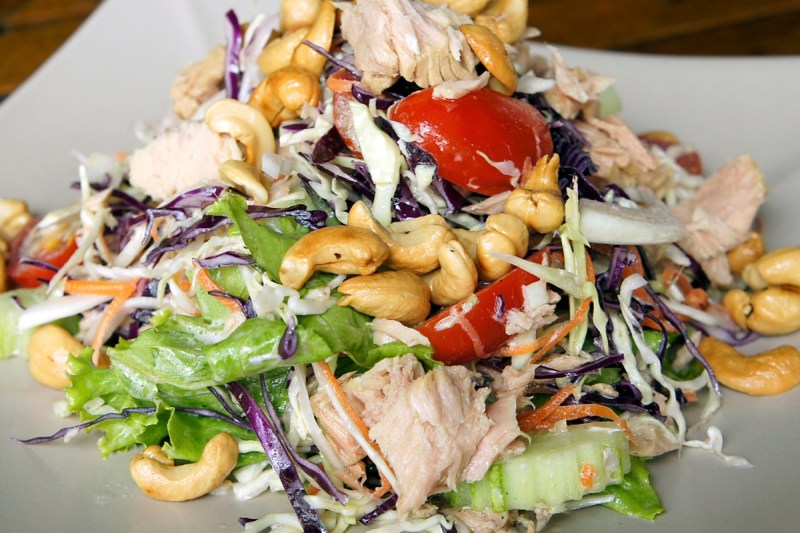If you think boiled chicken sounds boring and bland, then ask yourself this: How boring is a BBQ chicken sandwich, a chicken taco or quesadilla, a chicken Caesar salad, or any of the other many fine meals anchored by tender, juicy chicken that draws in any flavor you care to add? Far from bland, boiled chicken is one of the most versatile meats out there, and it’s also one of the easiest to prepare. Is boiling chicken glamorous? Maybe not, but it’s hard to screw up, and you can dress the stuff up in myriad ways.
One thing boiled chicken is not is poached; while poaching involves cooking in relatively low temperature liquid (think 160º F or so), boiling is, of course, done in a liquid at a full boil, or essentially 212º. That liquid can be simply water, broth, or water with a splash of wine, and you can always add carrots, onions, celery, and other vegetables to add flavor. We’ll get to that below.
First, we’ll do the basics. You’ll need a pot that can hold at least a couple quarts of water, a meat thermometer, tongs or a fork, and, ideally, some chicken.
How to Boil Chicken
- Pour a cup of warm water into the pot, then add your boneless, skinless chicken. Add enough water to fully cover the chicken
- Bring the water to a boil and then cover the pot, ensuring the water stays at an active simmer (bubbling, e.g.)
- Check the internal temperature of one of the pieces of chicken after about eight minutes, depending on size — if it has reached (or passed) 160º, cut the heat, remove the chicken from the water, and let it rest until cool enough to work with or to prep for storage
And that’s it, that’s how you prepare … the most boring boiled chicken known to man. So now let’s take things up a notch or 10, flavor-wise — you can use this easy boiled chicken recipe to prepare the perfect protein for wraps, sandwiches, salads, tacos, and more.

Simple Savory Boiled Chicken
Let’s get cooking!
Ingredients:
- 2 medium chicken breasts or five or six thighs, all boneless and skinless
- Half a white onion, roughly chopped
- 2 medium carrots, peeled and roughly chopped
- 2 stalks celery, roughly chopped
- 1 tsp black pepper
- 1 tsp paprika
- 1 tsp Italian blend spices
- 2 tsp garlic powder
- 2 tsp salt
Method:
- Start chicken in a pot filled with enough broth (veggie or chicken broth) to cover the meat
- Turn on the heat, then add the vegetables and spices
- When liquid reaches a boil, cover the pot and bring to a fast simmer (below a rolling boil, but bubbling away)
- After eight minutes, check one of the pieces of chicken; if internal temp is 160º, cut the heat and fish out the meat
- Let chicken rest for 10 minutes, then use two forks to shred the chicken, or slice or dice it as you please
And that’s it — you now have tender, tasty chicken that will be delicious as-is but that’s also ready to soak in flavors ranging from BBQ sauce to curry powder to soy and orange to whatever you can dream up.



